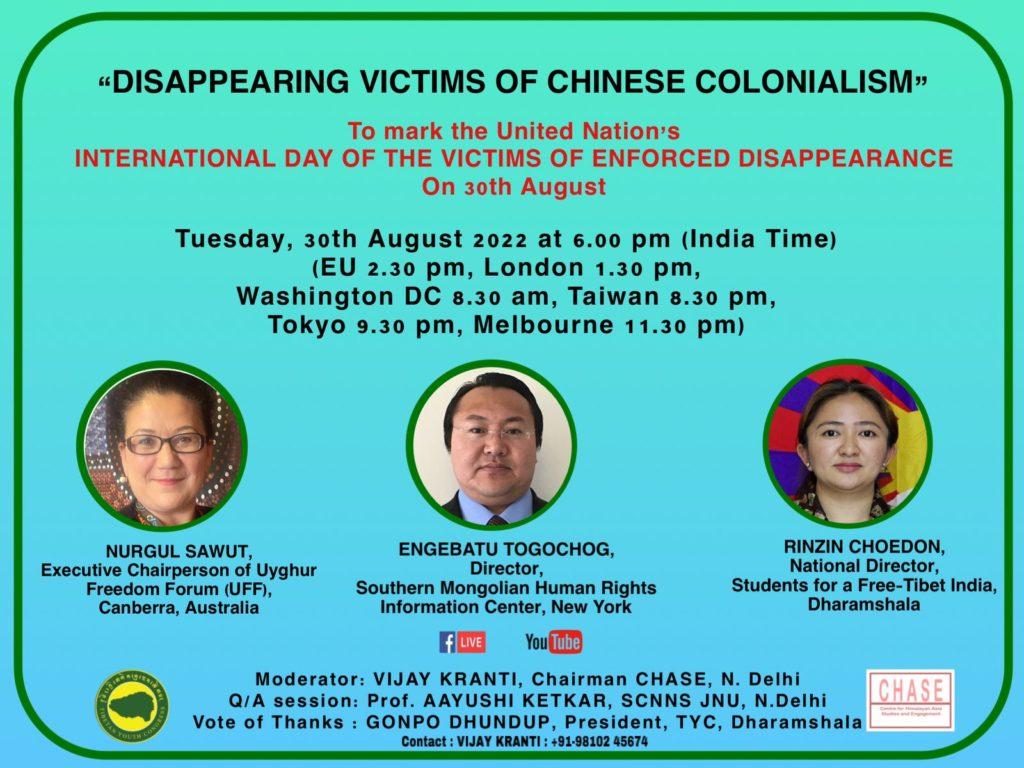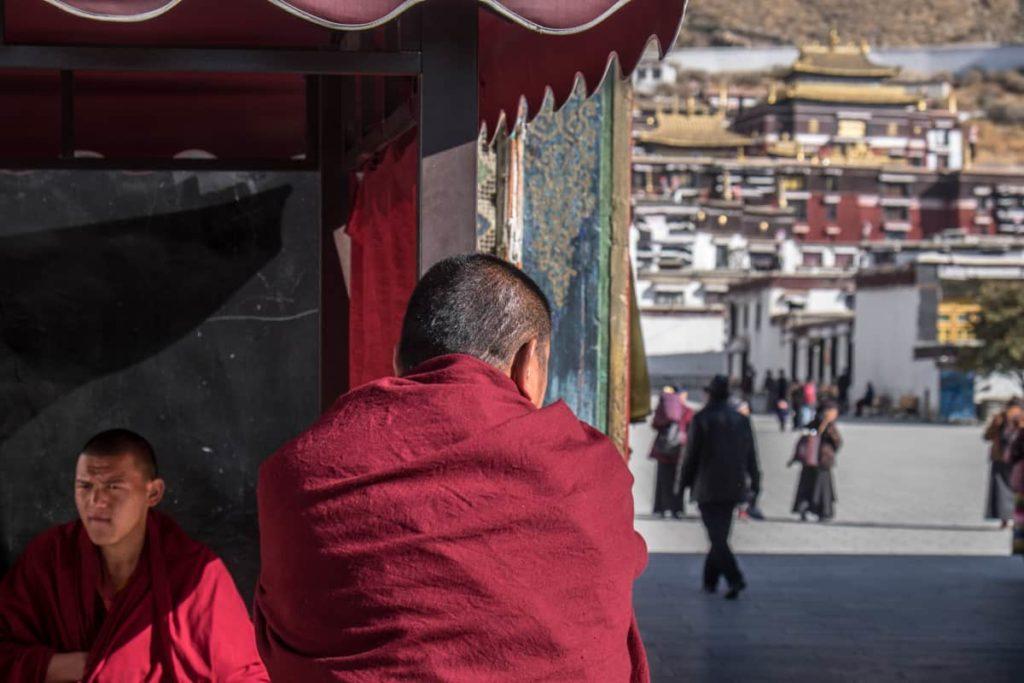Environmental Campaign
Tibetan Youth Congress initiates and organizes various campaigns relating to environment for the international community. TYC actively engages in various environment related campaigns like the ‘Clean India Campaigns’, ‘Swacch Bharat’ and organizes awareness talks and symposium highlighting the global importance of Tibet’s Environment. Tibetan Youth Congress also published a report on Tibet’s Environment and Developmental Issue.
Home to the largest store of fresh water outside the Arctic and Antarctic, Tibet is on the frontline of global climate change and is under serious threat from China’s failed policies. Like the Arctic, Tibet is experiencing profound climate change impacts. China’s hydro-damming and mineral extraction in Tibet combined with climate change, threaten to destroy Tibet’s unique ecosystems, disrupting life for a billion people downstream and across Asia. After the illegal occupation of Tibet in 1949, due to the Chinese government’s policies, Tibet has suffered from massive deforestation, mining and damming projects all contributing to climate change and affecting surrounding Asian nations and the world at large.
In order to bring attention of the international community to this continuing destruction of the environment of Tibet, TYC publishes reports, organizes awareness talks and takes part in Clean India Campaigns.
On the 4th of June 2017, just a day before the World’s Environment Day, Tibetan Youth Congress organized a symposium on ‘Tibet’s Environment, Asia’s Security’ held at India International Center in New Delhi. The symposium was organized to highlight the global significance of the Tibetan plateau and its current environmental situation in Tibet.
ISSUES
Water :
The Tibetan Plateau, dubbed the “Third Pole” and part of the “Roof of the World” holds the third largest store of water, ice in the world and is the source of many of Asia’s rivers.
Tibet, known as the Water Tower of Asia, serves as the source of ten major Asian river systems flowing into some of the most densely populated countries: China, India, Vietnam, Cambodia, Laos, Thailand, Burma, Bangladesh, Nepal, Bhutan and Pakistan. Tibet’s environment, particularly Tibet’s rivers, is a geostrategic concern for South and Southeast Asia has been raised both at high levels of the Indian government as well as in civil society with wide range of coverage in the media. Tibetan climate also generates and regulates monsoon rains over Asia. For China’s government, Tibet’s water is another resource to be exploited, for hydro-electric power, diversion to supply people elsewhere in China, bottling as a consumer product, and even as a source of strategic influence over countries downstream who rely on water from Tibet’s rivers. Damming has taken place or will soon take place on every major river in Tibet. These dams change water flow, create new lakes, disturb local ecosystems and have significant effects downstream, including stopping the flow of silt, which makes agricultural land fertile. Dams and infrastructure such as new roads can force Tibetans from their lands. In a massive engineering project, China even plans to divert water from Tibet to feed 300 million of its own citizens.
Mining :
Chinese Government owned mining companies are quickening their extraction of copper, gold and silver in Tibet. These mines are usually based closed to rivers. Most workers in Tibetan mines are Chinese and the extraction takes place without regard to the local environment and areas of religious significance.
Tibet is also good in other resources including lead, zinc, molybdenum, asbestos, uranium, chromium, lithium and much more. Tibet is China’s only source of chromium and most of its accessible lithium is in Tibet. These raw materials are used in manufacturing of household goods, computers and smartphones, among much else. China is the world’s second largest producer of copper and world’s second biggest consumer of gold. The World Gold Council predicts that the consumption in China will double within a decade. Tibet’s reserve of copper and gold are worth nearly one trillion dollars.
Nomads :
Tibet’s rangeland with an average altitude of 4500 meters covers approximately 70% of Tibet’s total area. The Alpine grassland at high altitude occupies over 60% of the total rangeland in Tibet. Pastoralism on the Tibetan plateau is an adaptation to a cold environment at elevations above the limit of cultivation. Consequently, pastoral nomads of Tibet have maintained a unique pastoral culture for more than 8000 years. Tibet’s grassland represents one of the last remaining agro pastoral regions in the world. The pasturelands are made habitable through the co-existence of the Tibetan people and their yaks. According to a recent archaeological fieldwork, pastoral nomads, who developed deep understanding of grassland dynamics and veterinary knowledge for close to 9000 years, have used the Tibetan plateau extensively. Tibet’s nomads have lived sustainably on the plateaus grasslands for millennia, in harmony with this globally significant ecosystem. The forced relocation and settlement of Tibetan nomads is one of the most severe and arguably most misguided aspects of Beijing’s grand plans for Tibet. In only a few years Chinese authorities have reportedly moved over two million Tibetans from their home on the grasslands to newly constructed settlements, profoundly altering Tibet’s social and environmental fabric. The policy is as self-defeating as it is unjust. Stripped of the livelihoods that have sustained them for a thousand of years, a once proud and resilient people now face an uncertain future. And while carried out on the grounds of environmental protection, the controversial policy has further compromised the ecological balance of the Tibetan Plateau.
Global Warming :
Tibet is warming TWICE AS FAST as the rest of the world. Glaciers are melting; putting millions of people downstream at risk from flood, water shortages and sea level rises, threatening coastal communities and habitats. As temperature rises, the permafrost layers thaws, releasing trapped methane into the atmosphere. Methane is another powerful greenhouse gas, which exacerbates warming, further contributing to a climate change loop. Temperature increases and glacial melt will provide more water in the short term, but more run-off water will lead to increased flooding, negative impact on fisheries and destruction of river eco-systems. Over the long term, glacial shrinkage will reduce water supply in dry seasons, creating increased variability in water availability. The region can expect to experience shorter, more intense rainfall and lengthier drought periods. The fertile plains of Ganga, Indus and Brahmaputra depend on the rivers owing from the glaciers. Reduced water availability and lengthier drought periods will diminish local agricultural productivity. The World Bank has estimated that crop yields could decline by up to 30 percent in South Asia by the mid-21st Century. Higher temperatures are also expected to result in a decline in rice yields. Fish production will also face losses due to rising temperatures, reduced participation and more droughts, as overall river flow reductions affect fish migration. China’s response to climate change on the Roof of the World is to a) Dams and diverts Tibet’s rivers
b) Exploitation of Tibet’s rich mineral reserves with devastating environmental and social outcome.
c) Remove Tibetan nomads, the traditional stewards of the Tibetan plateau, from their home on the grasslands on grounds of “environ protection”.
d) Crush any voice that dares to speak out against China’s policies.






